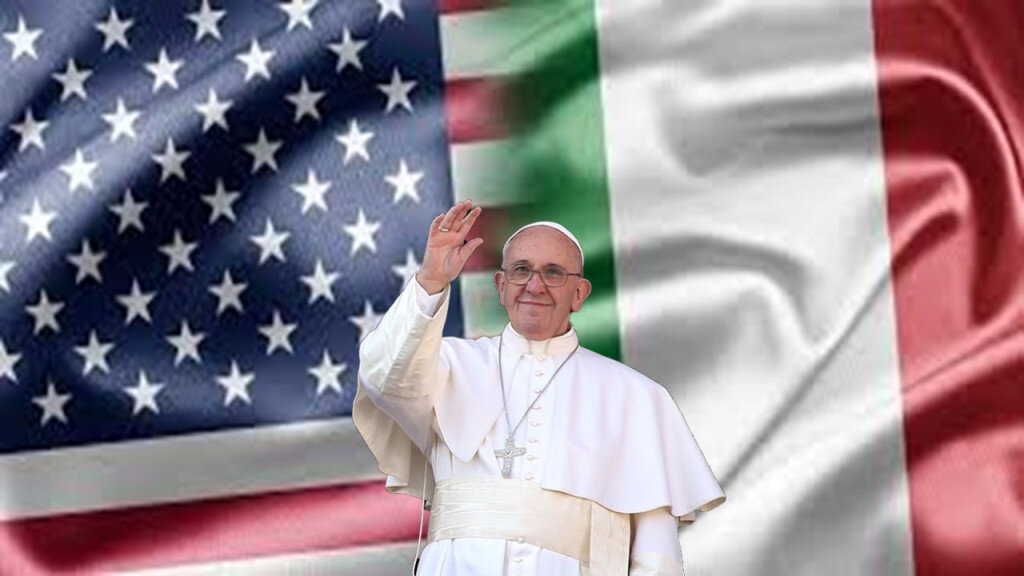Italian Americans & The Catholic Church
I am a survivor of fourteen years of Catholic education. I am still waiting for my lapel pin to come in the mail. Although I may joke about surviving the notorious nuns, I did receive a very good education in those years. One thing that I didn’t understand back then was the relationship between the Italian American community and the Catholic Church. Even when I was a kid, I thought it odd that none of the priests or nuns were Italian. They all had names like Quin, Bowman, and Evans. It took till October before those American nuns could pronounce our names without stumbling over them. Even then they never really got them right, but we knew better than to correct a nun.
So, what’s the deal? What happened to all the Italians in the Roman Catholic Church? The relationship between Italian Americans and the Catholic Church is – as they say about so many relationships – complicated.
Despite the stereotype, there has always been friction between the church and the Italian people. Many Italians, especially those in the south, saw the church as yet another institution living off the sweat of the working class. The hostility between the two became overt, however, during unification. Not only were the Papal States confiscated, but the spirit of the newly formed Italy also challenged the authority of the church. After unification, popes who described themselves as prisoners of the Vatican reached out to Catholics and foreign governments around the world to destabilize the newly-formed Italian government.
The Catholic Church in the United States at the time was only too happy to comply with the pope’s wishes. The American church was run by the Irish who had real animosity toward Italian immigrants. They saw Italian religious practices as more pagan than Christian. They saw the emphasis that Italians put on such things as scapulars, statues, and various talismans as pagan, focusing more on the object than the spiritual devotion that these things were meant to evoke.
Many within the church claimed that Italian immigrant religious practices were just held-overs from the pagan practices of the Roman and Greeks with a just veneer of Christianity. Looking at some of these practices one could hardly blame them. How many of us wear both a cornicello and crucifix? Even beyond a mere charm, who among us has not said the malocchio prayer at midnight on Christmas eve?
In addition to Italian immigrant forms of devotion, the Irish leaders were frustrated with the independent and, at times, rebellious Italian character. Italians did not accept that the priest, or even the church, as their only access to God. Southern Italian cynicism of the church was not left in Italy. Italian immigrants’ ultimate allegiance was to their non-Catholic Southern Italian culture. This was a direct challenge to the authority of the church.
The Catholic Church referred to this conflict with Italian immigrants as The Italian Problem. We should understand that this problem was more than just an internal issue. At the time Catholicism itself was not accepted as a legitimate Christian religion within much of the United States. Imagine the challenge confronting church leadership, while struggling to find respectability they have all these Eye-talians, a group not even seen as white, arrive with their pagan customs. This hardly helped their cause.
Part of the solution to this problem was to separate Italians from the rest of the congregation. As in the case of Our Lady of Mount Carmel in East Harlem where Italians were put in the basement of the church. At the same time, many Catholic priests learned to speak Italian to better communicate with the newly arrived congregants. The church became yet another institution that sought to Americanize the Italian immigrant, frequently at the expense of their cultural heritage.
Although the remnants of this bias extended to when I was a child, today’s Catholic Church is a much different institution. Often, to fill vacant positions within American parishes, the church imports priests from all over the world. Within such diversity, Americanized Italians hardly stand out. Today, just as the case with most of American society, Italians have become accepted as part of the mainstream.
